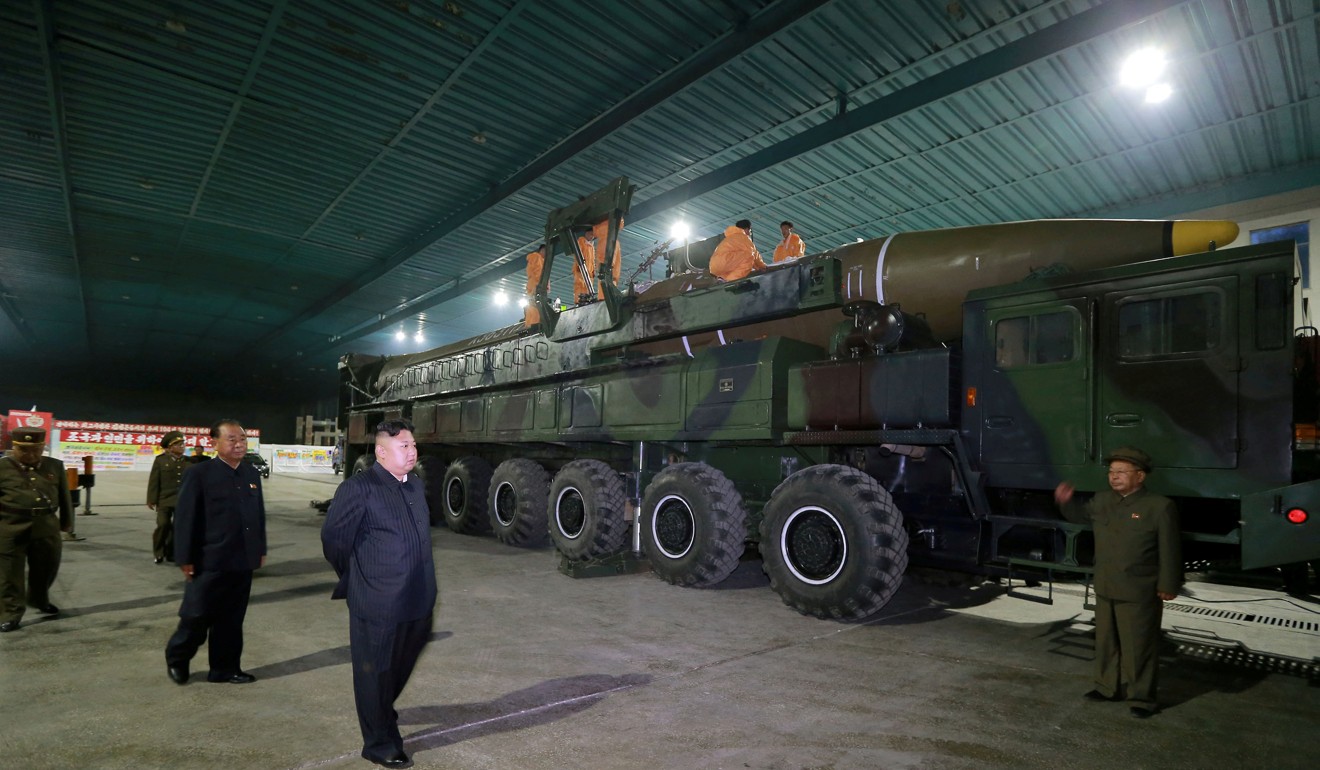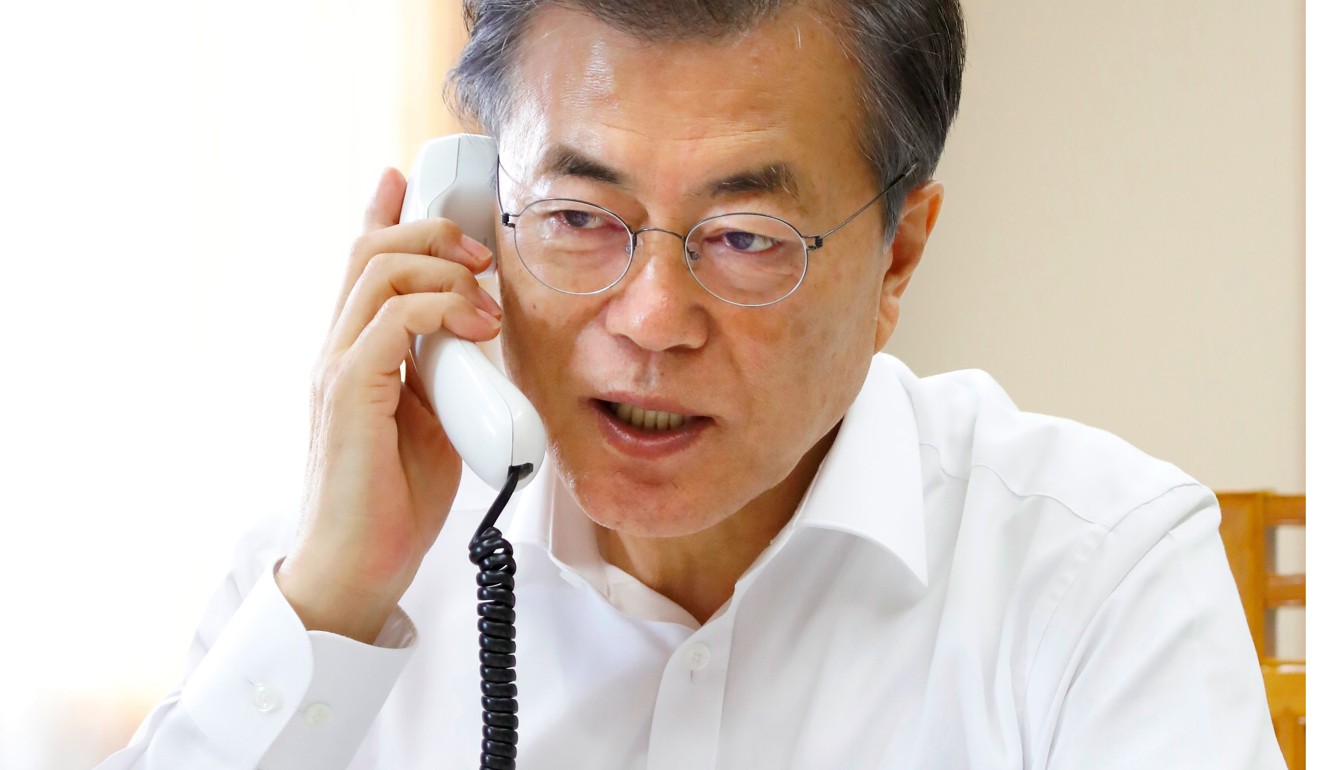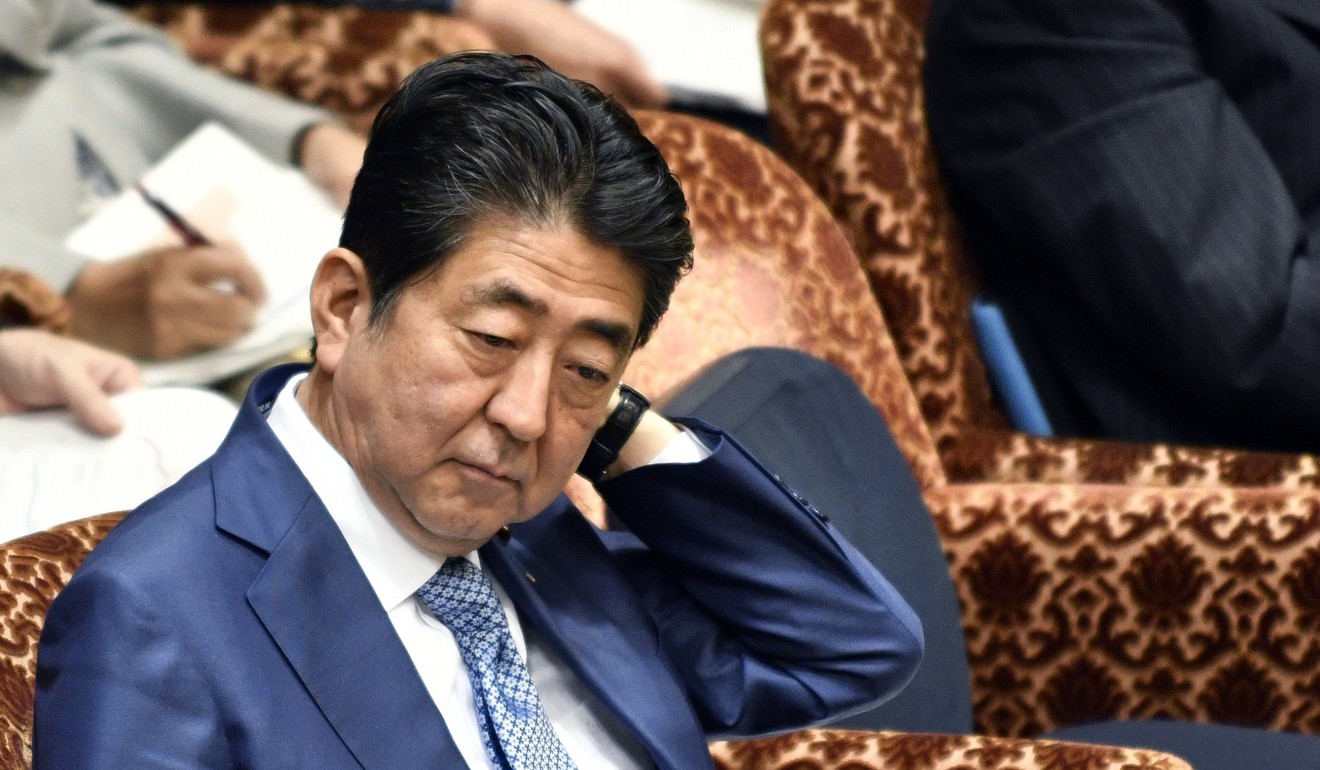South Korea, Japan condemn North Korea’s ICMB test as UN Security Council prepares emergency meeting
South Korea presumed the missile was a Hwasong-14 – a two-stage ICBM North Korea tested twice in July

South Korean President Moon Jae-in condemned North Korea’s “reckless” missile test on Wednesday, and warned that the situation on the Korean peninsula risked spinning out of control into catastrophic conflict.
Addressing a hastily-convened national security meeting, Moon said the North’s latest launch of an intercontinental ballistic missile (ICBM), which splashed down in waters near Japan, was a “reckless provocation” that would raise already elevated tensions to critical levels.
“The situation could get out of control if the North completes the development of ballistic missiles that can fly to a different continent,” Moon said.
“We have to prevent such a scenario where the North may miscalculate the situation and threaten us with nuclear weapons, or the US may consider a pre-emptive strike (against the North),” he added.
Meanwhile, South Korea’s military conducted a missile launch exercise near the eastern sea border with North Korea immediately after Pyongyang conducted its latest ballistic missile test, South Korea’s Joint Chiefs of Staff said.
The “precision strike” missile exercise lasted about 20 minutes from 3:23am. It involved an army missile unit, a navy Aegis ship and an air force KF-16 fighter jet that each fired at a simulated target the same distance away as the site from where the North launched the ballistic missile.
The Japanese and US governments both said Wednesday’s missile appeared to be an ICBM, with the South Korean military further identifying it as a Hwasong-14 type, similarly launched into the Sea of Japan (East Sea) in July.
It is the first launch since September 15, when North Korea fired a ballistic missile over northern Japan into the Pacific Ocean.
Echoing earlier statements by Cabinet ministers, Japan’s Prime Minister Shinzo Abe said the missile flew for 53 minutes after its launch at around 3:18am Japan time.

It reached a maximum altitude of over 4,000 kilometres and covered a distance of about 1,000km before landing in the exclusive economic zone around Japanese waters, Abe said in a Diet session.
David Wright of the US-based Union of Concerned Scientists said that if launched on a standard angle instead of its steep “lofted” trajectory, the missile would have a range of more than 13,000km, more than enough to reach Washington and “in fact any part of the continental United States”.
Abe said he and US President Donald Trump agreed in telephone talks within hours of the launch “that Japan and the United States will lead the coordination of the international community to raise pressure on North Korea to the maximum possible extent”.

Abe and Trump also reaffirmed the importance of China playing more of a role in reining in North Korea, a senior Japanese government official said.
China accounts for about 90 per cent of the North’s trade and is a major oil supplier to the country.
They shared the view that “the North Korean regime’s provocative actions are undermining its security and further isolating it from the international community,” according to the White House.
Foreign Minister Taro Kono said Japan, which has no diplomatic ties with North Korea, lodged a protest in “the strongest terms” through its embassy in Beijing and urged the North to change its policies.
The government did not give an order to intercept the missile because it judged there was no possibility that it would land within Japanese territory, Defence Minister Itsunori Onodera said.

Onodera said there are no reports of damage to aircraft or ships in the area where the missile appears to have come down, around 250km west of Aomori Prefecture on the northern tip of Japan’s main island of Honshu.
South Korea’s military said North Korea fired the missile eastward from the vicinity of Pyongsong, South Pyongan Province, near the capital Pyongyang.
The UN Security Council will hold an emergency meeting on Wednesday afternoon over the missile launch following a request by Japan, the United States and South Korea, Italian Ambassador Sebastiano Cardi said in New York.
The rotating Security Council presidency will switch from Italy to Japan on Friday.

The Security Council had imposed stricter sanctions on North Korea on September 11, taking aim at its supply of oil and gas for the first time, following the North’s sixth and by far largest nuclear test earlier that month.
In Russia, a key lawmaker responded to the launch by chiding the United States and South Korea for having provoked North Korea through recent joint military exercises, Russian media reported.
The reports said Leonid Slutsky, head of the State Duma’s International Affairs Committee, also criticised Pyongyang’s behaviour as irresponsible.
Although North Korea held off on launches for more than two months in the wake of the stricter UN sanctions, speculation was rife that it could resume action following its return to the US state sponsors of terrorism list and an exchange of personal insults and threats of war with Trump.
In his speech to the United Nations on September 19, Trump said he is prepared to “totally destroy” North Korea if the United States is forced to defend itself or its allies. He also mocked North Korean leader Kim Jong-un as “Rocket Man”.
Kim responded by issuing a statement saying, “Now that Trump has … insulted me and my country in front of the eyes of the world … we will consider with seriousness exercising of a corresponding, highest level of hard-line countermeasure in history.”
North Korean officials subsequently suggested the country could test a powerful hydrogen bomb over the Pacific Ocean.
Agence France-Presse, Kyodo